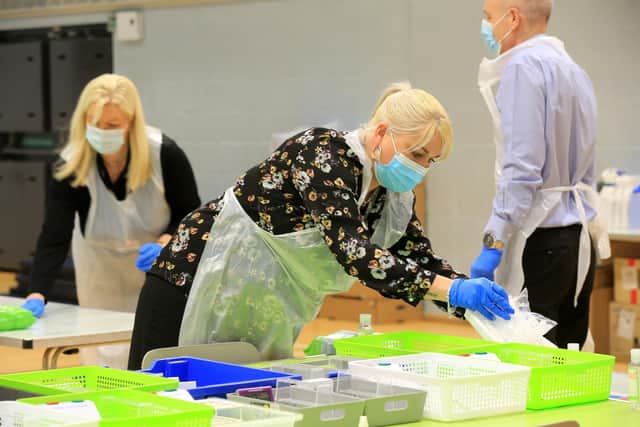The two coronavirus hotspot areas of South Yorkshire - where rates are in top five nationally
and live on Freeview channel 276
Barnsley has the second highest weekly rate in England behind only South Derbyshire, while Rotherham is fourth in the national league table.
Doncaster is 36th out of 315 local authorities, with Sheffield 68th.
Advertisement
Hide AdAdvertisement
Hide AdDuring the week ending March 4 – the latest date for which reliable figures are available – 367 people tested positive for coronavirus in Barnsley, giving a weekly infection rate of 148.7 new cases per 100,000 people – down from 166.9 during the previous seven days.


In Rotherham, there were 387 new confirmed cases, as the weekly infection rate fell from 176.3 to 145.8.
In Doncaster, the rate fell from 154.9 to 98.4, and in Sheffield there were 487 new cases, as the rate fell by more than a third from 125.8 to 83.3.
Julia Burrows, Barnsley’s director of public health, said: “The persistent stubborn rates in Barnsley are frustrating for everyone, and I can assure you that we are doing everything we can, both as a council and in our work with health partners, to drive this number down.
Advertisement
Hide AdAdvertisement
Hide Ad"We use every opportunity offered to us, such as community testing, providing financial support to people who need to isolate via our local discretionary grant and Covid-19 local support service, the use of covid marshals, and support and advice to businesses including supermarkets on operating safely.
“We also use a range of channels to get advice and guidance messages out to Barnsley residents. We will strengthen this with community engagement via our services who work out and about across the borough, and who can have conversations with residents about these issues and the best ways to reduce and prevent transmission.”
She added that the high case rate was often a reflection of Barnsley’s population, with high-density households, lots of people having to leave their homes to work in factories and warehouses, an older population and many people with long-term health conditions.
And she said that while infections remain high, there are ‘significantly fewer’ people in hospital with Covid, suggesting the vaccines and lockdown are having an impact.
The England-wide average now stands at 66 new cases per 100,000 people, with the UK figure slightly lower at 65.1.